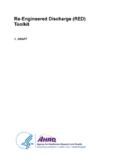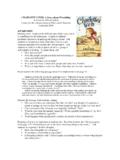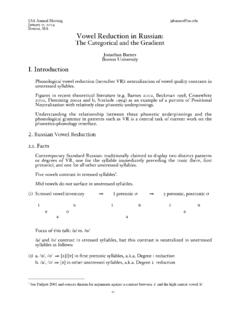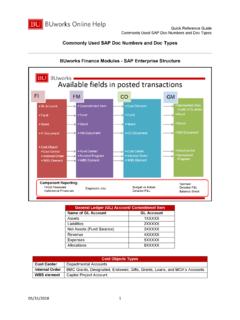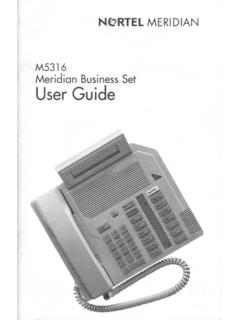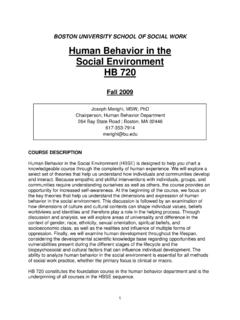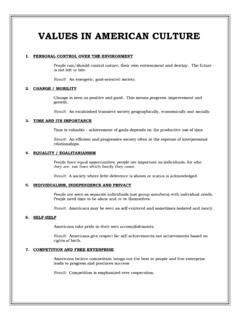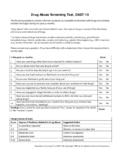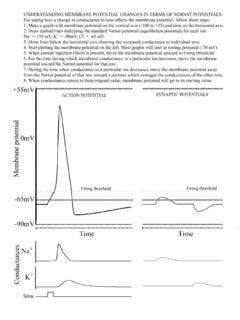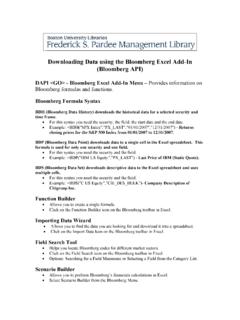Transcription of Reducing Hospital Readmissions With Enhanced Patient …
1 Reducing Hospital Readmissions with Enhanced Patient EDUCATIONP ublished by FierceHealthcare Custom PublishingSPONSORED BYReducing Hospital Readmissions with Enhanced Patient EducationAt least 20 percent of all patients who are admitted to a Hospital make a repeat visit within 30 days of discharge , according to Medicare and others who ve studied the pervasive problem of Hospital Medicare alone currently spends $15 billion a year on rehospitalizations, and in 2004 estimated the total cost to be $ billion. These tallies do not account for the intangible strain high Readmissions put on hospitals or the distress and dissatisfaction caused to patients who repeatedly find themselves back in the a whopping three-quarters of Readmissions could likely be avoided with better care, reported a 2007 congressional report by the Medicare Payment Advisory Commission.
2 And hospitals, insurance com-panies, and the US Congress have taken , under the new federal healthcare law, the Centers for Medicare & Medicaid (CMS) services will use a 30-day cutoff to start penalizing hospitals with higher than expected rates of Readmissions , start-ing in 2012, and may ultimately refuse payment for selected diagnoses that occur within this timeframe. Health reform legislation also initiates a closer look at global payment systems, with a number of pilot proj-ects planned that would include reimbursement per diagnosis as opposed to each service, including read-missions, related to a causes of Readmissions vary widely. While in some cases, patients conditions may unavoidably get worse, many patients return to the Hospital quickly because of an error that occurred during their first visit.
3 AHRQ estimates that one in five patients has a complication or an adverse event, such as a drug Reducing Hospital Readmissions with Enhanced Patient EDUCATION interaction, after being discharged from the Hospital , drastically increasing their odds of a costly ER visit or Patient education connectionThe good news, however, is that a large swath of these issues can be resolved, not with more medical pro-cedures and tests, but with simple communication. In particular, patients who have a clear understand-ing of their after- Hospital care instructions, including how to take their medicines and when to make fol-low-up appointments, are 30 percent less likely to be readmitted or visit the emergency department than patients who lack this information, according to a study funded by the Agency for Healthcare Research and Quality (AHRQ) and published in the February 3, 2009, issue of the Annals of Internal According to Brian Jack, MD, who led the research team at Boston University Medical Center s Department of Family Medicine, a staggering amount of hospitalized patients receive no education about how to care for themselves at home at all.
4 Life in the Hospital is full of conflicting priorities, and the education of the Patient becomes one of the lower priorities, Jack says. For whatever reason, it s very clear that [ Patient education] doesn t get done. To help change this scenario, Jack and colleagues developed a multifaceted program to educate patients about their post- Hospital care plans, called the Re-Engineered Hospital discharge Program, or Project RED. The program used specially trained nurs-es to help patients arrange follow-up appointments, confirm medication routines and understand their diagnoses using a personalized instruction booklet. A pharmacist contacted patients between two and four days after Hospital discharge to reinforce the medica-tion plan and answer any days after their Hospital discharge , the 370 patients who participated in the RED program had 30 percent fewer subsequent emergency visits and read-missions than the 368 patients who did not.
5 Nearly all (94 percent) of the patients who participated in the RED program left the Hospital with a follow-up appointment with their primary care physician, compared to 35 percent for patients who did not par-ticipate. And nearly all (91 percent) participants had their discharge information sent to their primary care physician within 24 hours of leaving the RED is only one of numerous studies showing a profound connection between Patient education and reduced example, at Del Sol Medical Center in the most-ly Latino community of El Paso, Texas, the adoption of a Patient education software system that allows staff to print out Patient information about heart fail-ure and heart attacks in multiple languages, including Spanish, contributed to a drastically reduced heart failure readmission rate during the study period from 16 percent to 7 And a year-long study of 109 heart failure patients at Columbia San Jose Medical Center in 1998 found that patients who participated in a low-cost educa-tion program in increasing self-care and medication compliance were nearly half as likely as nonpartici-pants to be readmitted to the Patient education workWhile the pattern is clear that patients who have a better understanding of their medications, signs and symptoms of disease.
6 Diet and lifestyle requirements and upcoming physician appointments and tests have exponentially better success staying healthy outside patients who have a clear understanding of their after- Hospital care instructions, including how to take their medicines and when to make follow-up appointments, are 30 percent less likely to be readmitted or visit the emergency department than patients who lack this information. Reducing Hospital Readmissions with Enhanced Patient EDUCATIONthe Hospital , not all Patient education programs are created equal. Across the dozens of completed stud-ies and initiatives underway, organizations with the best results have the following traits in common: Teaching efforts are consistently targeted to the appropriate key learner Educators consistently evaluate patients understanding of the information provided Organizational culture supports efforts to prioritize Patient education Strategies and technologies are adopted to make Patient education activities fit easily, if not automatically, into Hospital employees work flow Education materials are designed thoughtfully with the Patient in mind1.
7 Identify the key learnerIn 2009, the threat of losing reimbursement for certain Readmissions prompted leadership at Pennsylvania s Lehigh Valley Health Network (LVHN), to create change across its three hospitals that would improve care and prevent patients from boomeranging back shortly after its collaboration with the Institute for Healthcare Improvement (IHI), the LVHN workgroup learned that one of the top reasons Patient education efforts fail is because key learners are not consistent-ly identified on admission or involved in the teaching process, says Patient care specialist Debra Peter, MSN, RN, BC, CMSRN. Key learner is defined as an individual or group of individuals, which may or may not include the Patient , who is responsible and accountable to the learning process.
8 To identify the key learner, Peter says that LVHN staff are now trained to ask patients standardized questions on admission, such as Who accompanies you to physician appointments?, Who assists you with your medications?, Who takes care of you at home? and Who should be listening in at the time of discharge to your instructions? The nurse then documents these findings on the whiteboard in the Patient s room, so that any mem-ber of the healthcare team who interacts with that Patient can see clearly who should be involved with the teaching, she Evaluate learningAlso under the advice of the IHI, LVHN s second major focus of its discharge -process-improvement initiative was to consistently evaluate patients understanding of what they ve been taught, says Paula Robinson, MSN, RN, BC, the network s Patient family and con-sumer education many hospitals have done with impressive results, LVHN adopted a learning-evaluation strategy called teach back, which encourages key learners to relay what they ve learned in their own words.
9 Questions staff might ask a heart failure Patient , for example, include, What is the name of the diuretic or water pill you take? or What amount of weekly weight gain should your report to your physician? Although some hospitals use teach back by ask-ing patients the same such questions repeatedly during every day of hospitalization, LVHN found better results by asking patients a different set of teach-back questions during every day of their hos-pitalization, as follows: Day 1: Knowledge questions, such as what following a low-sodium diet entails. Day 2: Attitude questions, such as, Why is it important to take your water pill every day? Day 3: Behavior questions, such as, How will you remember to check for symptoms of heart failure every day?
10 Reducing Hospital Readmissions with Enhanced Patient EDUCATIONIn the first three months LVHN began using teach back with its heart failure patients , the network found that patients with whom they use teach back expe-rienced lower readmission rates and lengths of stay. Among heart failure patients readmitted for heart failure within 30 days between July and September 2009, teach-back patients were readmitted 25 per-cent less often than those who did not receive teach-back evaluation, Robinson nursing staffs typically take on the bulk of the responsibility in educating Hospital patients about their conditions and what to do after discharge , LVHN has gradually involved more disciplines, such as phar-macy, rehab services and others, in providing and evaluating Patient education.
